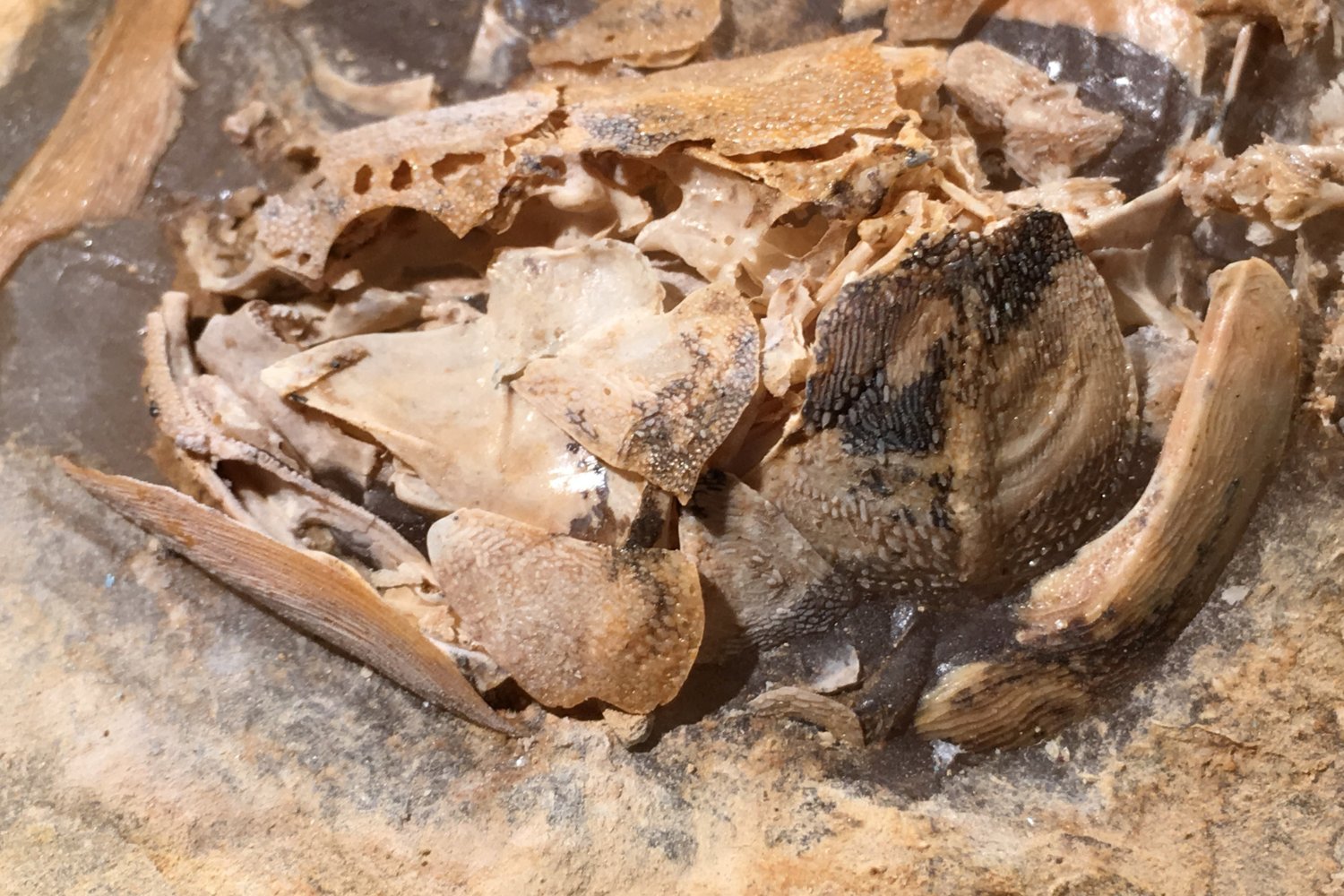
An ancient coelacanth—the type of fish deemed a ‘living fossil’ when it was discovered in 1938—may have evolved in concert with tectonic activity, according to a new paper.
In the work—published today in Nature Communications—a team of researchers describe a new coelacanth species from the late Devonian, about 383 million years ago. Using changes in Earth’s subduction as a proxy for ancient tectonic activity, the team concluded that coelacanth species evolved more rapidly when there was more activity.
“Our analyses found that tectonic plate activity had a profound influence on rates of coelacanth evolution,” said lead author Alice Clement, an evolutionary biologist and paleontologist from Flinders University, in a university release. “Namely that new species of coelacanth were more likely to evolve during periods of heightened tectonic activity as new habitats were divided and created.”
The two fossil specimens, representing a single coelacanth, were collected during a 2008 expedition to what was once an ancient tropical reef. The recent team CT-scanned them, giving them 3D images of the fish, which is remarkably preserved in three dimensions; many fossilized scales and skull bones are apparent in the acid-treated fossil.
Coelacanths are often called living fossils because, when discovered off the South African coast in 1938, they uncannily resembled ancient fish species from the fossil record. (It’s worth noting that locals were almost certainly aware of the coelacanth’s persistence prior to 1938.) Today, there are two known extant species of coelacanth, inhabiting the waters off South Africa and Indonesia.
“We calculated the rates of evolution across their 410 million-year history,” said study co-author John Long, a paleontologist at Flinders University, in the same release. “This revealed that coelacanth evolution has slowed down drastically since the time of the dinosaurs, but with a few intriguing exceptions.”
But recent research has also shaken up the “living fossil” trope. One 2021 paper found that coelacanth DNA has gotten a revamp in the past 23 million years—relatively recent changes when you consider its ancestors, like the Australian specimen, didn’t change much over 300 million years. The same year, a different team of researchers determined the fish can live up to 100 years, and likely doesn’t even reach maturity until around age 50.
The coelacanth continues to evolve, even if it does so at a slower rate than its pre-dinosaur days. But the recent body of work suggests a straightforward story: just because an animal may fit our conventional ideas of what prehistoric looks like, it doesn’t mean the animal isn’t adaptable.
Trending Products




